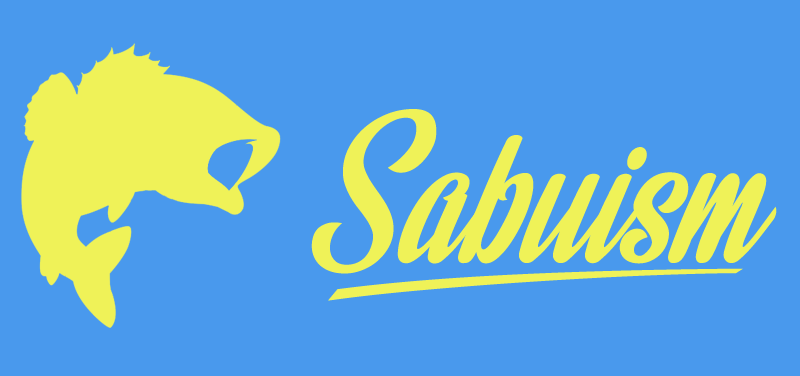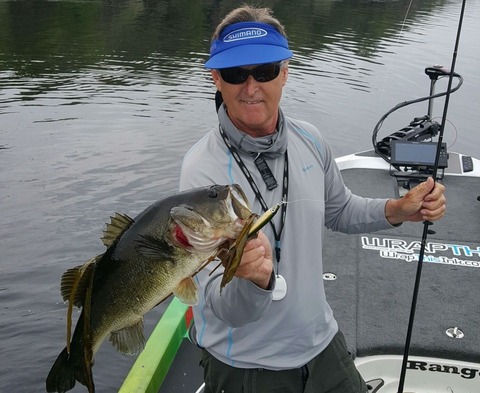おはようございます。フィッシングトランスレーターのサブイズム(@sabu94_1982)です。
本記事はリライト記事となります。
弾丸出張にて、ペンシルべニア州からフロリダ州へと移動してきました。3時にホテルチェックインですw。
そして今さっきおきました笑
さて、本日は釣りロマンでもお馴染であったバーニーの記事です。B.A.S.S.HPからの抜粋です。
これまたこれからの初夏に大変役に立つ記事となっています。
<Facebookページへの「いいね!」を押して頂くと、常に最新の記事が御覧になれます。>
Source: http://www.bassmaster.com/bernie-schultz/which-topwater-when
Contents
Which Topwater when(05062016)
Bernie Schultz
I’m often asked how I choose the right topwater lure for a given situation, and that’s a tough question. There are so many variables to consider – the weather, water color, type of cover. The list is long.(与えられた状況に対して、私は何時もどのように正しいトップウォーターを選択するのかを聞かれます。そして、それは大変困難な質問と言えます。なぜなら、そこには多くの顧慮すべき要素があるからです。例えば天候、水の色、カバーの種類等であり、そのリストは膨大です。)
But it doesn’t mean we can’t narrow the possibilities a bit.
(しかし、それは決して可能性を狭めているわけではありません。)
Here are a few guidelines that have worked for me over the years, and hopefully they’ll help simplify things for you next time you’re out on the water.(このコラムでは、私が何年もかけて突き詰めてきた幾つかの指南書を載せたいと思います。そして次回読者の皆さんが水辺に出た際に、もう少し簡単に事が運ぶ手助けになる事を願います。)
To start, it’s important to break down the various types of topwater lures. Among them are poppers, walking baits, prop baits and buzzbaits. And while each of these are designed to draw fish to the surface, the way they achieve that is quite different. Here’s why.(まず初めに、様々な種類のトップウォーターを分類することが重要です。その中には、ポッパー、ウォーキングベイト、プロップベイトそしてバズベイトがあります。そして、それらが水面に魚を引き出す一方で、その方法は各ルアーにより大きく異なります。では見ていきましょう。)
LEARNING TO WALK(ウォーキングベイト編)
Let’s take walking baits, for instance. Unless you’re throwing a really large profile model, or one with a loud internal noise maker, the actions for walking baits are fairly subtle. They simply move from side to side in a smooth, gliding motion.(まずウォーキングベイトから見ていきましょう。読者の皆さんが本当に大きなサイズ又は、ノイズを出すルアーを投げない限り、これらのアクションはただ非常に分かりにくいです。単純にスムーズに左右にスライドをするだけの、水面を削るような動きだからです。)
Of course, that’s not always the case. They can also be worked aggressively to create more commotion. But for the most part, walking baits are the stealthier members of the topwater family.(もちろん、何時もそういうわけではありません。ウォーキングベイトも
より騒ぎを生みだすのに攻撃的に機能することもあります。しかし、多くの場合、ウォーキングベイトはトップウォーターファミリーの中でも気配を消す部類のルアーです。)
They are excellent in deep, clear reservoirs and on natural lakes … especially those with grass, docks or flooded cypress trees. They have the ability to catch larger than average fish. That goes for largemouth, spots and smallmouth. They also have the ability to raise suspended fish. So, for those reasons, I try them whenever conditions seem right.
(ウォーキングベイトは、ディープ、クリヤーリザーバー、そして天然湖で威力を発揮します。特にグラス、ドックないしは冠水したサイプレスツリーがある場所でです。アベレージサイズよりもより大きなバスを引き出す能力があります。ラージマウスバス、スポッテッドバスそしてスモールマウスバスに有効です。サスペンドしているバスを水面に引き上げる能力もあります。これらの理由から、状況が上手くフィットしそうな時は何時もウォーキングベイトを使うようにしています。)
When I feel a walking bait might work, I’ll start with a steady, medium-speed retrieve – sashaying the lure next to or over various visual targets, like stumps, holes in the grass, etc. If I don’t see a fairly quick response from the fish, I’ll slow the retrieve and shorten the distance of each pull. When the lure reaches the target, I’ll either make contact, pause it or both. If that fails, then I’m probably switching to another lure.(このウォーキングベイトが上手く機能しそうだと思う時、私は一定の中ぐらいのリトリーブスピードで動かし、次に左右にスライドするように動かします。それか、スタンプ、グラス穴等に狙いを定めて大きなものを使用します。もし魚から可也早いレスポンスが無い場合は、ゆっくり引き、引く距離を短くします。ルアーが目的の場所に到達した時、その場所へのコンタクトとポーズのどちらかを実施します。もし上手くいかない場合は、恐らく他のルアーに変更するでしょう。)
POPPING FRESH(ポッピングフレッシュ)
Because the profile of a walking bait may be too large for certain situations, I’ll sometimes drop down to a standard-sized popper. And depending on the mood of the fish, I’ll work the popper accordingly.(ウォーキングベイトの見た目は時として大きすぎる場合があるので、私はしばしば通常サイズのポッパーにサイズを落とします。そして魚のやる気次第で、状況に従いポッパーを使っていきます。)

For instance, when bass are chasing shad or some other type of forage fish on the surface, I’ll usually start with a brisk retrieve – sliding and popping the lure steadily through what I believe are the highest percentage areas. This presentation works extremely well when bass are on the feed, but it can also provoke fish that aren’t in the mood.(例えば、バスが水面でシャッドや他の餌となる魚を追いかけている時、私は最も可能性の高いと信じたエリアを大抵きびきびとしたリトリーブで始めます。ルアーを滑らせ、一定速度でポッピングさせます。このプレゼンテーションはバスが水面で餌を捕食している際に究極的に上手く機能します。一方でやる気の無い魚をやる気にもさせます。)
On other occasions, I may work a popper more slowly … much like a walking bait. In fact, by tying a loop knot, you can get some poppers to also walk from side to side. Their gait is obviously less, but they can still sashay enough to make fish mad, and that can generate strikes.(他には、私はもっとスローにポッパーを動かすかもしれません、、
よりベイトがうろうろしているようにです。事実、係留してあるロープの傍にポッパーをキャストして左右にスライドさせてみて下さい。その動きは、明らかに魚を怒らせるのに
十分な動きです。そしてストライクを発生させます。)
When less action is best, I’ll pause a popper next to the target and let it bob. You’d be surprised how many strikes this can produce.(レスアクションがベストな時、私はターゲットの横でポッパーを止めて、ひょいと浮かせておきます。皆さんはこれがどの位多くのストライクを生みだすか驚くでしょう。)
Poppers are good around grass, wood and rock, especially under calm, overcast conditions.(ポッパーはグラス周り、ウッド、岩、特に水面が穏やかな状況で効きます。)
A PREFERENCE FOR PROPS(プロップベイトの好み)
My favorite topwater lure type is the prop bait. Maybe it’s because I’m from the South, but I have a tremendous amount of confidence in them.(私の好きなトップウォータールアーはプロップベイトです。これは私が南部の出身だからかも知れませんが、このプロップベイトに対して揺るぎない自信を持ち合わせています。)
Of all the topwaters, I feel the prop bait requires the most patience. Too often, the tendency is to overwork the lure – continually pulling it so the props are sputtering and chirping, making excessive commotion.(全てのトップウォーターの中でも、プロップベイトが最も忍耐力を要求されると思います。しばしば、それはルアーの技量を超えます。
継続してルアーを引き、プロップが音をたてて、(鳥の)さえずりのような過度のざわめきを起こします。)

The truth is most of the strikes I get on prop baits come as the lure is sitting still, or just as it begins to move after a lengthy pause.(私がプロップベイトで釣ってきて最も多くのストライクを生みだした真実として、ルアーが止まっている時ないしは、長時間のポーズから動き出した直後が多いです。)
Sure, there are times when bass will connect on a quicker cadence, but not usually. That’s why I use the propellers to get the fish’s attention, and then let the lure’s profile do the rest. This slow, almost glacial-speed retrieve works particularly well when there’s a slight ripple on the surface. At that point, the lure takes on its own action.
(もちろん、バスが素早い動きに反応してきた事もありますが、大抵はそうではありません。
なので、私は魚の注意を引く為にプロペラを使います。そしてルアー–を休ませます。
このゆっくりな動き、殆ど停止しそうなスピードでのリトリーブは水面が多少ざわつく際に有効です。その際、ルアーが本来持つアクションをします。)
I like prop baits anytime there is grass, either emergent or submerged. They also work well around flooded brush, cypress and laydowns. The trick is getting the lure tight to the cover without fouling, then working it with patience.(私は、そこにグラスが出ていようと水中にあろうとどんな時も好んでプロップベイトを使用します。また沈んだブラッシュ、サイプレス、レイダウン周りでも有効です。コツは失敗することなくカバーに対してタイトにルアーをキャストし、忍耐力を持って動かすことです。)
It’s important to carry both single and tandem-prop models. Sometimes one will outperform the other. And if you’re throwing a tandem, I highly recommend those with counter-rotating props. To me, they are by far the best producers.(シングルプロップだけでなく、ダブルプロップも持参する事が大事です。たまにどちらかが機能しない場合があるからです。もしダブルを投げる時には、逆回転するプロップである事を強く勧めます。私にとって、それはベスト中のベストです。)
Lastly, be sure the hardware is loose so that the props can turn freely to create a subtle chattering sound. That drives bass crazy.(最後になりますが、プロップが微妙な回転サウンドを自由に作れるようにパーツを緩めておいてください。)
SURFACE LURE SUMMARY(水面系ルアーのまとめ)
Although I’ve tried to provide some separation from one group to the next, the truth is, these various types of topwaters can and will overlap each other. When a walking bait might work, so could a popper, and so on. So keep an open mind and let the situation and the fish help you make the best choice.(幾つかのグル―プに分けてきましたが、言えることは、様々なトップウォーターはお互いに重なる部分があるということです。ウォーキングベイトが機能しそうな時はポッパーも機能するかもしれませんし、その他もしかりです。なので、常にオープンマインドで状況にゆだね、皆さんがベストな選択をする為にバス達が手助けてもらうようにしましょう。)
Next time we’ll discuss the differences and advantages of topwaters that require steady movement to remain on the surface. Stay tuned!(次回は、水面で一定の動きを必要とする
トップウォーターの違いと利点についてみていきたいと思います。Stay Tuned!!)
ペンシル、ポッパーそしてプロップベイト(スイッシャー)の使い方について、詳細な使い分けが
述べられていましたね。これからの時期、このような諸条件を頭にいれて釣場に向かうだけでも
釣果が全く異なってくるかもしれません!当方も為したいと思います!
では、また後程!

Sabuism
◆Facebook「いいね!&フォロー」/Twitter「フォロー」 /Instagram 「フォロー」を押すと 最新の情報をお届けします(*´ω`*)◆
⚫peingという質問BOXをツイッターに開設しました。御興味のある方は質問下さい。匿名で投稿出来ます!⚫
▶こんな記事あったら面白いな~なんて方は、御意見頂けると幸いです。採用かも??⇒sabuism94@gmail.com◀
















